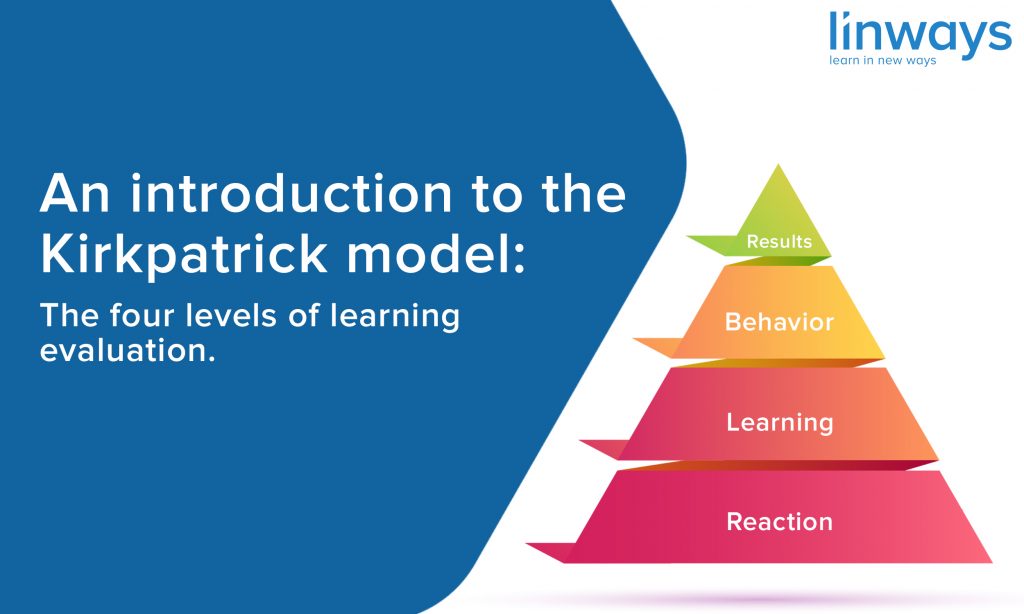The four levels of learning evaluation.

We have previously discussed many different types of learning theories and evaluation techniques. You can refer to those articles here:
An introduction to learning theories_ Part-I
An introduction to learning theories_ Part-II
A guide to learning theories
As a teacher, it is important to have an understanding of the basic principles of teaching-learning and assessments. The more options you have, the more informed decisions you can make. You can experiment with various types of teaching techniques and evaluation methods, blend them or improvise them, and finally create that perfect plan that’s tailored to your teaching style and best fit your students’ developmental needs.
In this article, we are going to discuss about Kirkpatrick model, or more specifically, and introduction to it. We will see how it came to being, what are the basic concepts, and how can you apply it to your classroom.
What is the Kirkpatrick model?
The Kirkpatrick model was developed by Donald Kirkpatrick in 1955. It is probably the best-known model for analyzing and evaluating the results of training and educational programs. The model is composed of four levels. Kirkpatrick’s four levels are designed as a sequence of ways to evaluate training programs.
What are those four levels of evaluation in the Kirkpatrick model
Level 1: Reaction
The first level of evaluation pertains to the degree to which participants find the training favorable, engaging, and relevant. It gives you valuable information on if your coaching style is engaging and would be necessary to retain the learner’s attention. This level basically helps you make sure that what you teach reaches the students at all times.
Level 2: Learning
The second level of the Kirkpatrick model of evaluation is about the degree to which students acquire the intended knowledge and skills. This is what we usually evaluate during exams or tests in the classroom. It gives you an idea of how much the student has learned from your class and which areas you need to focus on or revisit in order to help your students learn better.
Level 3: Behavior
The third level of evaluation relates directly to how much the students can apply in practice or in context from what they learned during class. As the Kirkpatrick model is very commonly used in job training environments, this is where they evaluate if the training knowledge is transferred so the student can apply to their jobs. In education scenarios, the evaluation can be done as practical sessions in labs, assignments, special projects to find solutions for real-world problems, etc. which can be translated to course credits or added assessment tactics.
Level 4: Results
Finally, the fourth level of the Kirkpatrick model is where you evaluate the results of institutional assessments and put other assessment results into the context to see if your students have truly achieved the learning outcomes. This is where you shall measure the effectiveness of your teaching on the achievement of those learning outcomes.
So as you now have a basic understanding of the concept, we will now move on to more details like applying the Kirkpatrick model in the classroom. But as we go deeper into the topic, it gets more elaborate and complex. So we will discuss more about these four levels and their direct translation in practical terms in our next blog. Please subscribe to our weekly newsletter to stay updated about new learning theories, teaching strategies, and other updates in education.
Also published on Medium.





1 Comment